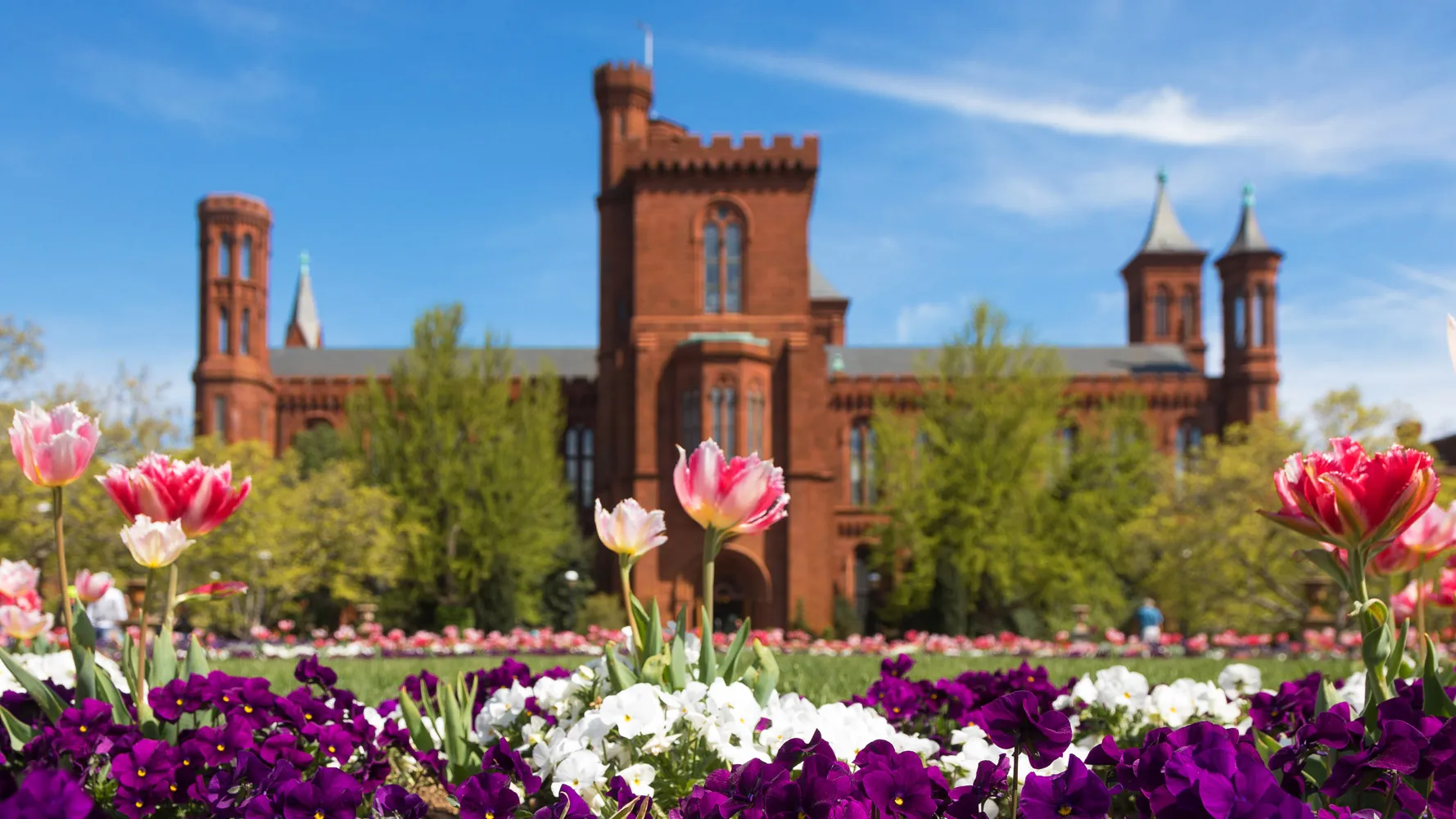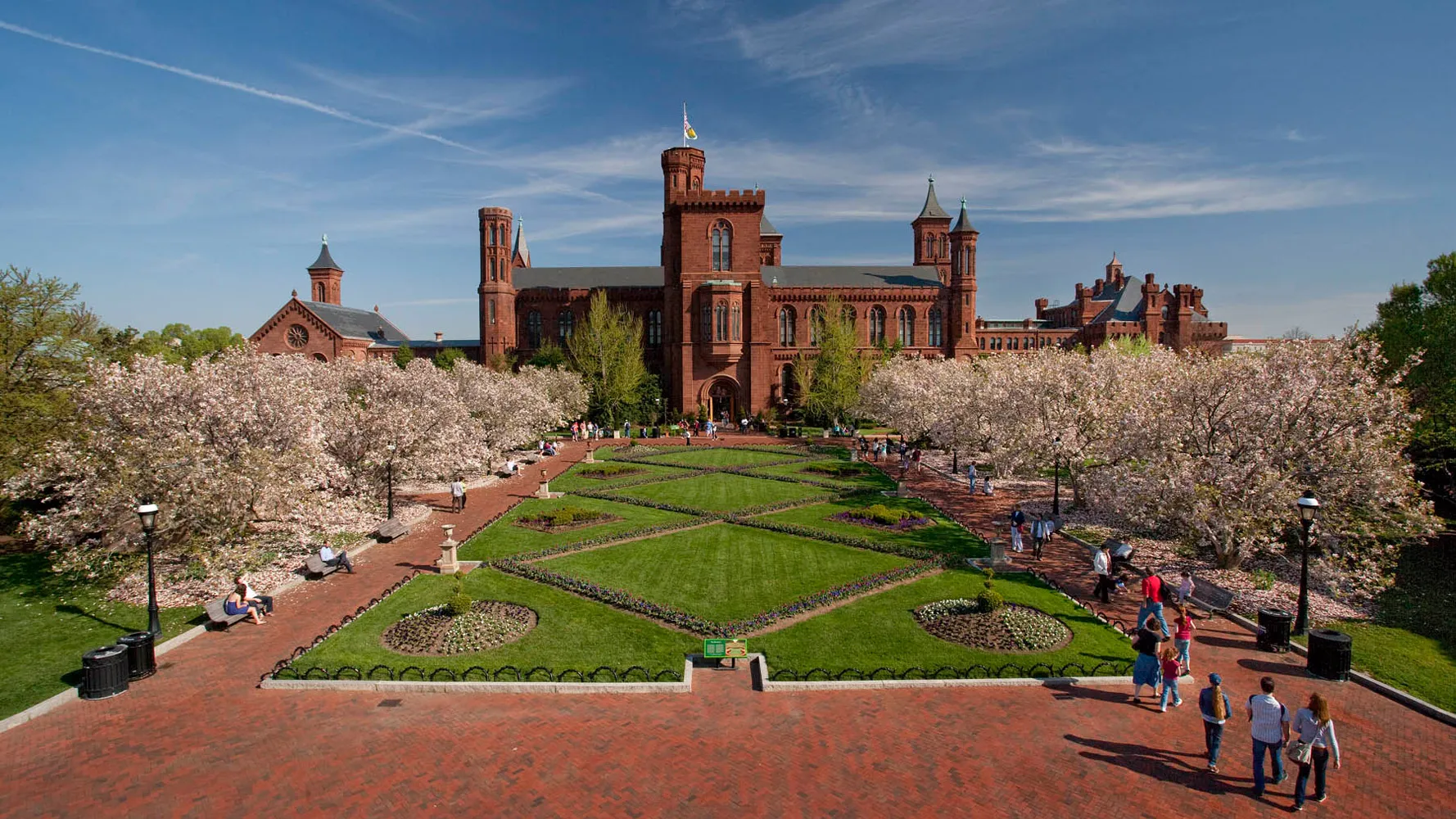The Smithsonian Announces Renovation of its Historic “Castle”






The doors to the landmarked “Castle” in Washington, D.C. will be shuttered starting February 1 for an anticipated five-year renovation.
During this period, the Smithsonian Institution Building, a nineteenth-century Gothic Revival style structure designed by James Renwick Jr. that looms over the National Mall at Jefferson Drive SW, will undergo a top-to-bottom renovation—its first since the late-1960s—including the careful restoration of its decorative interior details, terrazzo floors, and two-story Upper Great Hall.
The citadel-esque structure—known colloquially as “the Castle” thanks to its soaring turrets, square towers, and distinctive red sandstone façade—is described by the Smithsonian as its "signature" building and the D.C.-based research institution’s first structure, completed in 1855. Designated as a National Historic Landmark in 1965 and added to the National Register of Historic Places the following year, the Castle has been modified extensively and has played host to myriad uses over its many decades. Currently, the building houses the Smithsonian’s administrative headquarters along with its main Visitor Center as well as a café, gift shop, and modest exhibition space for artifacts.

Smithsonian Castle at Dusk. Photo by Ken Rahaim, courtesy Smithsonian Institution, click to enlarge.
When it reopens, the Castle will largely serve the same function, with an expanded café, gift shop, and restrooms relocated to the building’s lower level. Meanwhile, the 1960s-era office annex, situated above the Great Hall, will be removed to reinstate the hall's original purpose as a public programming venue, according to an official announcement. (The 150 Smithsonian employees currently based in the Castle’s offices will move to the nearby Capital Gallery at 600 Maryland Avenue SW while work is underway.)
In addition to the interior overhaul, the Smithsonian will carry out a host of other upgrades and improvements including restoration efforts focused on restoring the building’s exterior stonework. The five-year refurbishment will also involve window and roof repairs and the replacement of aging mechanical, electrical, plumbing, security, and technology systems. The building’s historic façade, constructed from red sandstone sourced from Maryland’s Seneca Quarry, will remain unchanged.
During the interim period, the Smithsonian will launch additional online services incorporating a virtual Visitor Center complete with museum information, maps, guidelines, and an Adventure Lab app, which will guide participants through “touchless scavenger hunts.” In addition to the more robust online offerings, the Smithsonian plans to expand in-person services to visitors outside of the Castle walls. The complex’s adjacent, four-acre public Enid A. Haupt Garden will remain open during the closure, as will pathways that provide pedestrian access from the National Mall to the garden, the Arthur M. Sackler Gallery, and the National Museum of African Art, which saw its own upgrade in 2019 in the form of a revitalized entry pavilion accompanied by Ethiopian artist Elias Sime’s site-specific work We Are All Green).

Close up of the Enid A. Haupt Garden. Photo by Eric Long, courtesy Smithsonian Institution
News of the Castle’s temporary closure comes as the Smithsonian completes—and commences—a slew of other major projects including an extensive revamp of the National Air and Space Museum, which reopened to visitors last October; the 2021 reopening of the neighboring 1861 Arts and Industries Building after a 17-year closure; and last November’s groundbreaking for the contentious redesign of the Gordon Bunshaft–designed (and Lester Collins–revised) Hirshhorn Sculpture Garden led by Hiroshi Sugimoto. Last October, the Smithsonian also revealed two potential, Mall-adjacent sites for the forthcoming National Museum of the American Latino and the Smithsonian American Women’s History Museum.
Renovation work at the Castle will kick off this March with an expected completion date in 2028.







